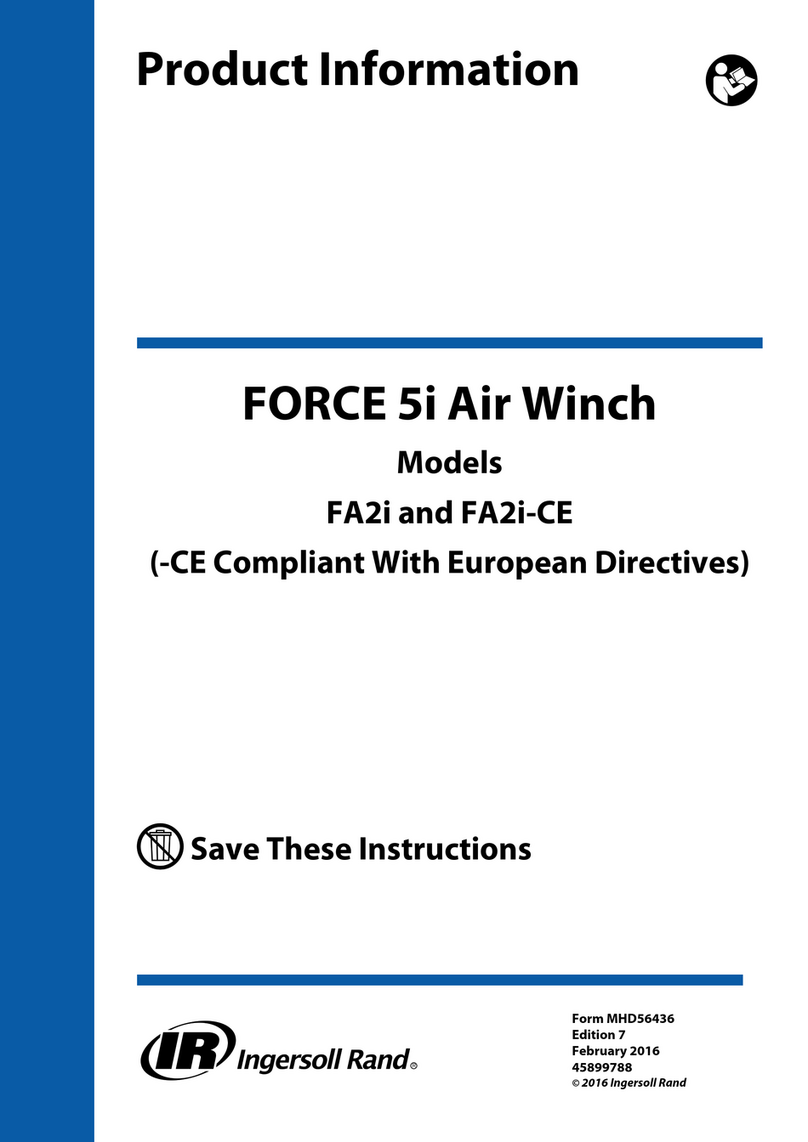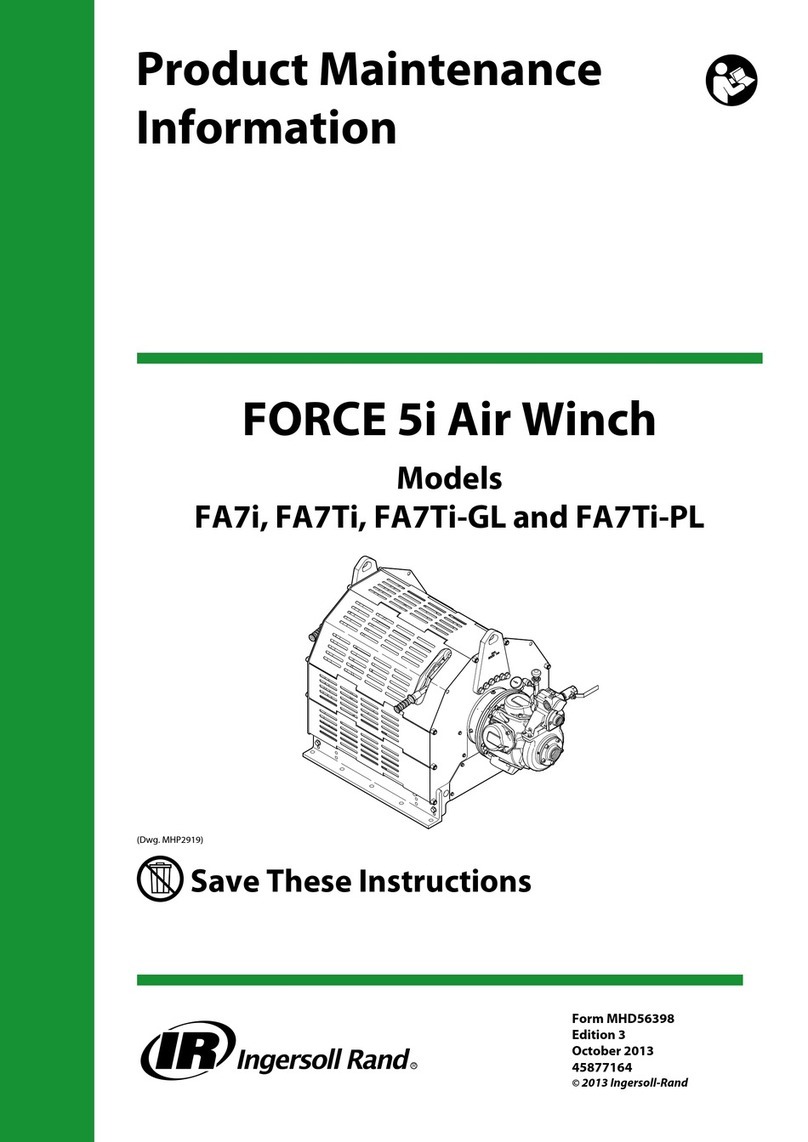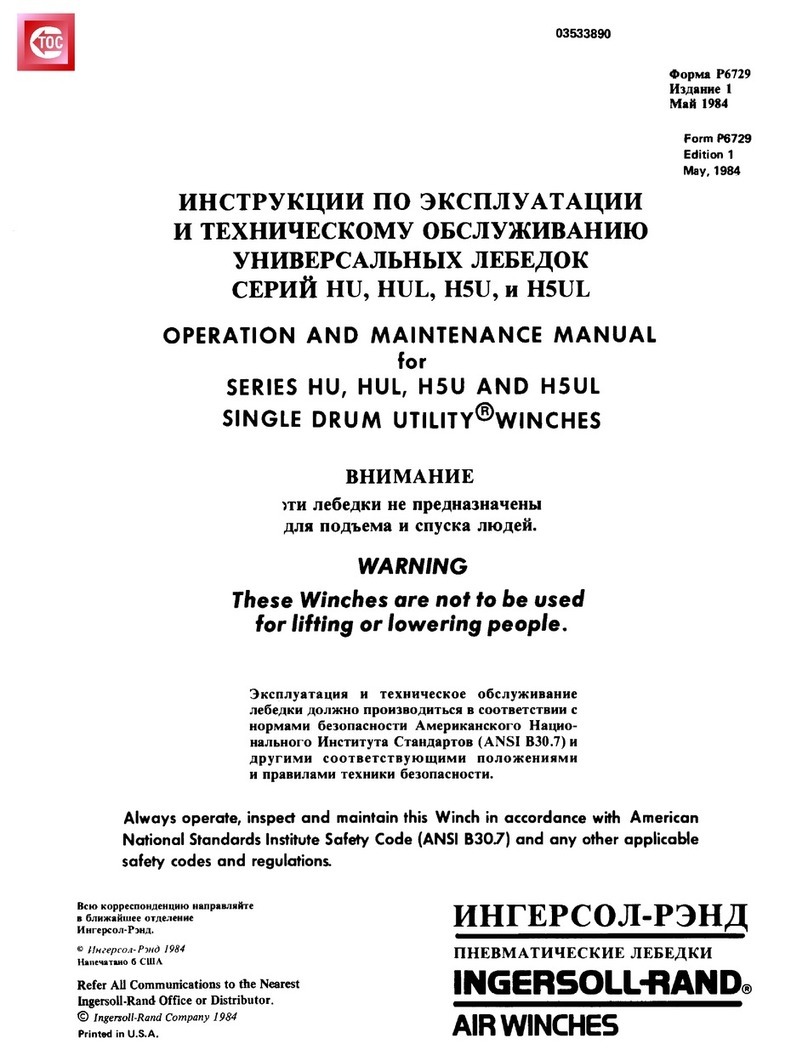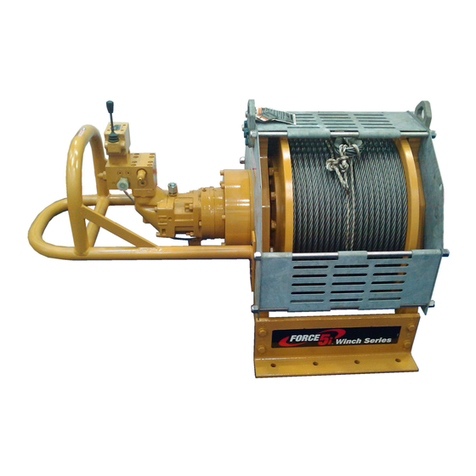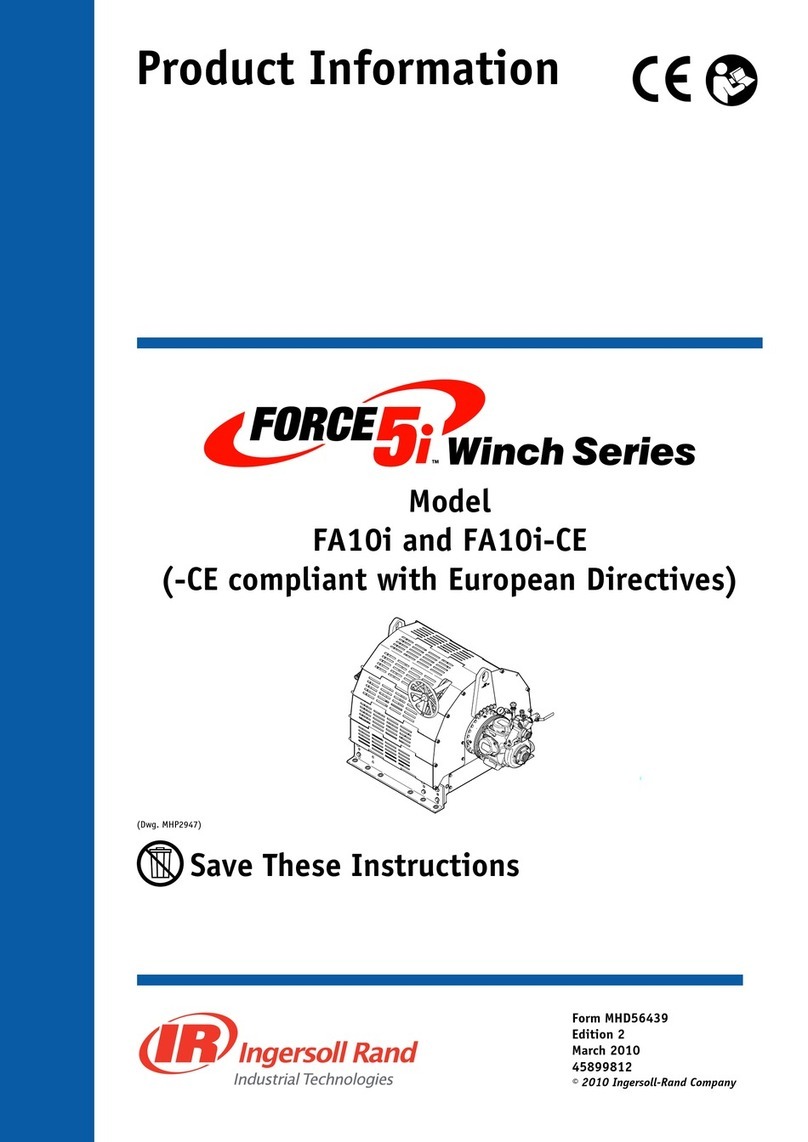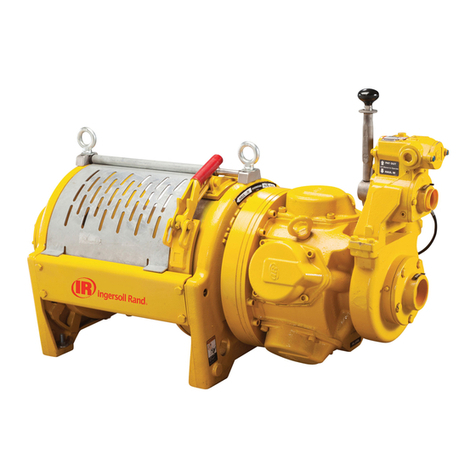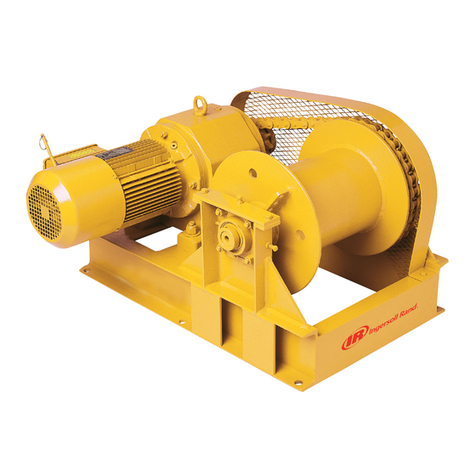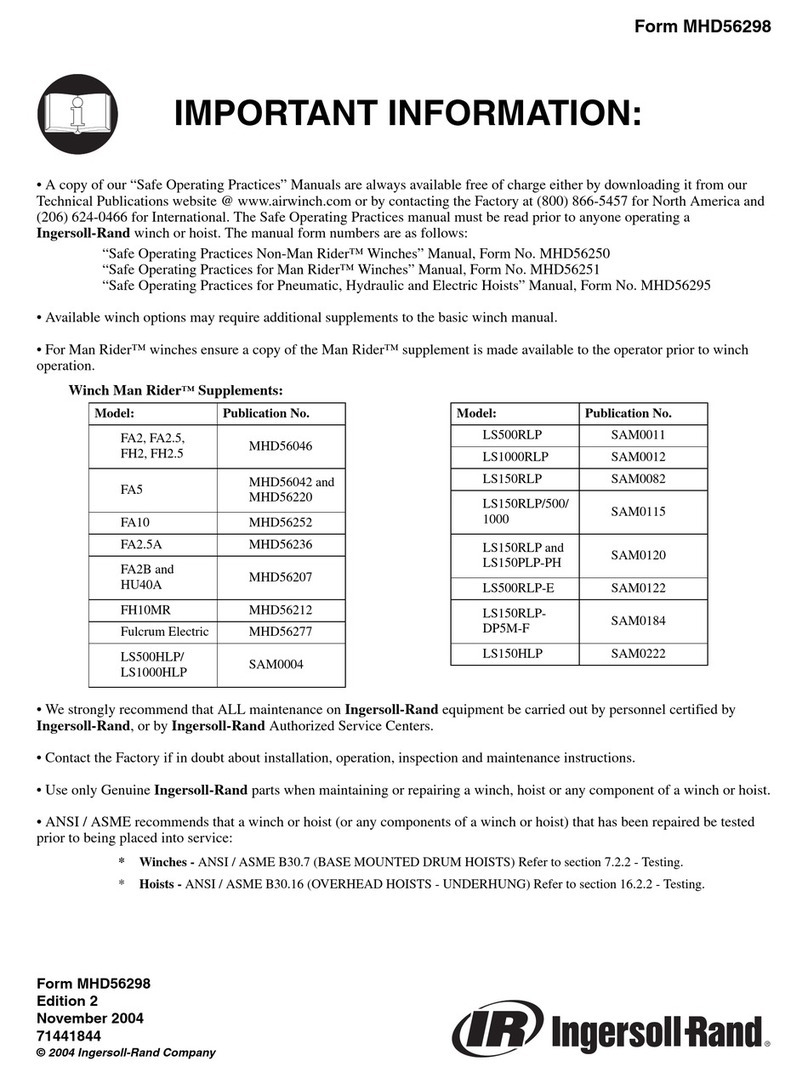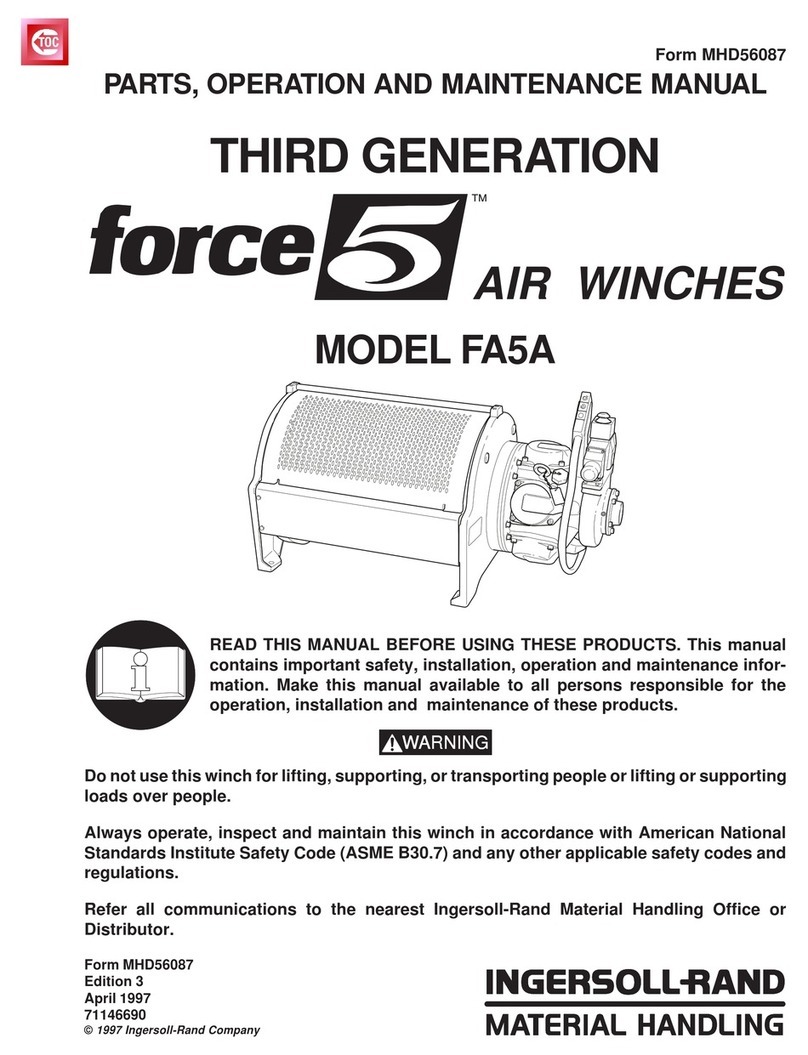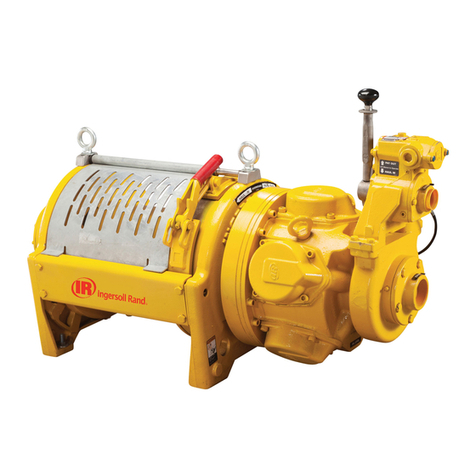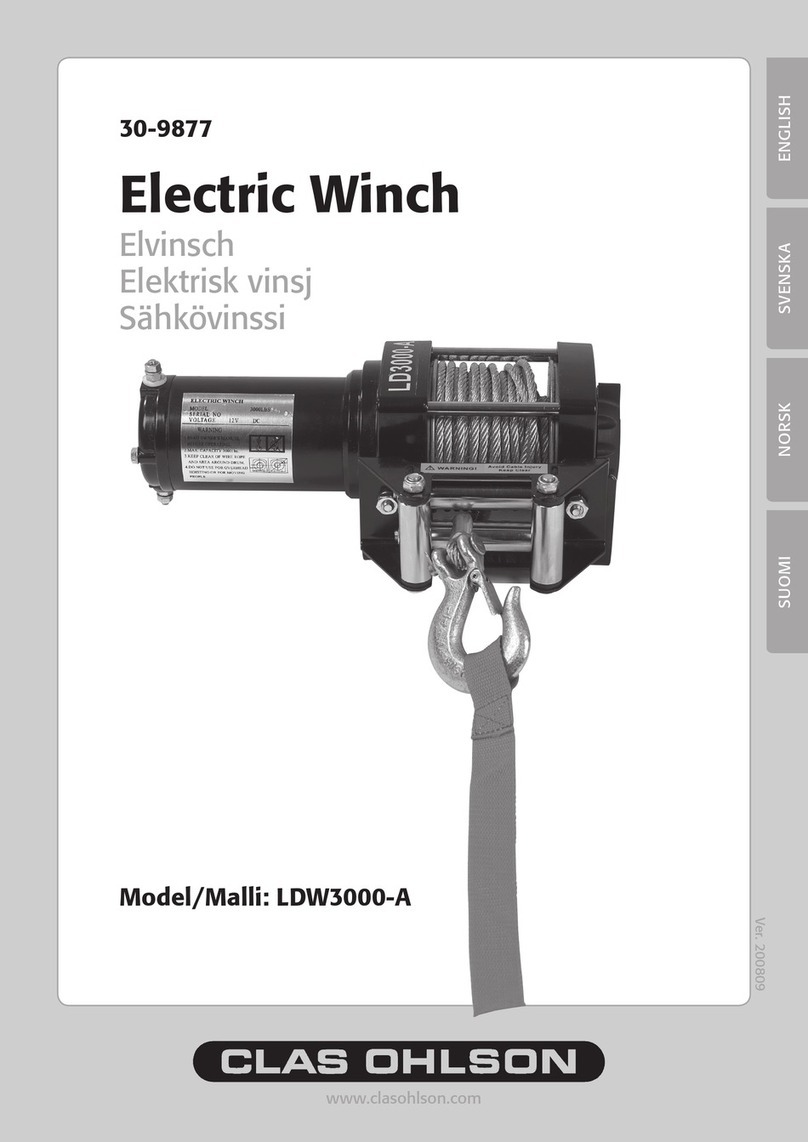
This manual provides important information for all
personnel involved with the safe installation, operation
and proper maintenance of this product. Even if you feel
you are familiar with this or similar equipment, you should
read this manual before operating the product.
Danger, Warning, Caution and Notice
Throughout this manual there are steps and procedures
which, if not followed, may result in an injury. The
following signal words are used to identify the level of
potential hazard.
Danger is used to indicate the
presence of a hazard which will
cause severe injury, death, or
substantial property damage if the
warning is ignored.
Warning is used to indicate the
presence of a hazard which can
cause severe injury, death, or
substantial property damage if the
warning is ignored.
Caution is used to indicate the
presence of a hazard which will or
can cause injury or property damage
if the warning is ignored.
Notice is used to notify people of
installation, operation, or
maintenance information which is
important but not hazard-related.
Safety Summary
l
This winch was designed to meet ANSI A10.22-1990
which limits its use as part of a system for personnel
lifting. There are other components required to
complete the system. It is the users responsibility to
supply all other components necessary to properly
complete the lifting system in accordance with the
regulations that pertain to the lifting application.
l
It is the owner’s and user’s responsibility to check
and to conform to all regulations (local, state, federal
and country) that may apply to the use of a winch or
winch system for lifting and lowering people before
using a Man-Rider@ winch for personnel movement.
l
The supporting structures and load-attaching devices
used in conjunction with this winch must provide an
adequate safety factor to handle the rated load, plus
the weight of the winch and attached equipment. This
is the customer’s responsibility. If in doubt, consult a
registered structural engineer.
Ingersoll-Rand Man-Riders winches are designed and
manufactured to meet or exceed standards and
specifications established for base mounted drum hoists as
defined by ASME B30.7 and for the purpose of personnel
handling as defined by ANSI A10.22 - 1990.
In furnishing customers Man-Rider@ winches,
Ingersoll-Rand does not warrant the suitability of these
winches for any particular use. It is the owner’s and user’s
responsibility to determine the suitability of this winch for
a particular application.
Ingersoll-Rand Man-Rider® winches manufactured to
ANSI A10.22 standards are designed as a component in
the Personnel Lifting System. Ingersoll-Rand approval
for use of this winch in Man-Rider@ applications
automatically terminates for any of the following reasons:
1. Winch is not installed in an approved personnel lifting
system.
2. Winch is not properly maintained in a safe working
condition, with all parts intact and properly adjusted.
3. Winch is used in applications not approved by codes
and regulations, or application is inconsistent with
manufacturer’s operation and maintenance manual.
4. More than one winch is used to attach to a common
load.
5. Winch design or functions are altered or changed in
any manner from the purchased original without prior
approval by Ingersoll-Rand.
This manual has been produced by Ingersoll-Rand to
provide company personnel, dealers, mechanics and
operators with the information required to install, operate,
and maintain the products described herein.
It is extremely important that mechanics and operators be
familiar with the servicing procedures of these products, or
like or similar products, and are physically capable of
conducting the procedures. These personnel shall have a
general working knowledge that includes:
1. Proper and safe use and application of common
mechanics’ hand tools as well as special
Ingersoll-Rand or recommended tools.
2. Safety procedures, precautions and work habits
established by accepted industry standards.
Ingersoll-Rand can not know of, nor provide all the
procedures by which product operations or repairs may be
conducted and the hazards and/or results of each method.
If operation or maintenance procedures not specifically
recommended by the manufacturer are conducted, it must
be ensured that product safety is not endangered by the
actions taken. If unsure of an operation or maintenance
procedure or step, personnel should place the winch in a
safe condition and contact supervisors and/or the factory
for technical assistance.
2
